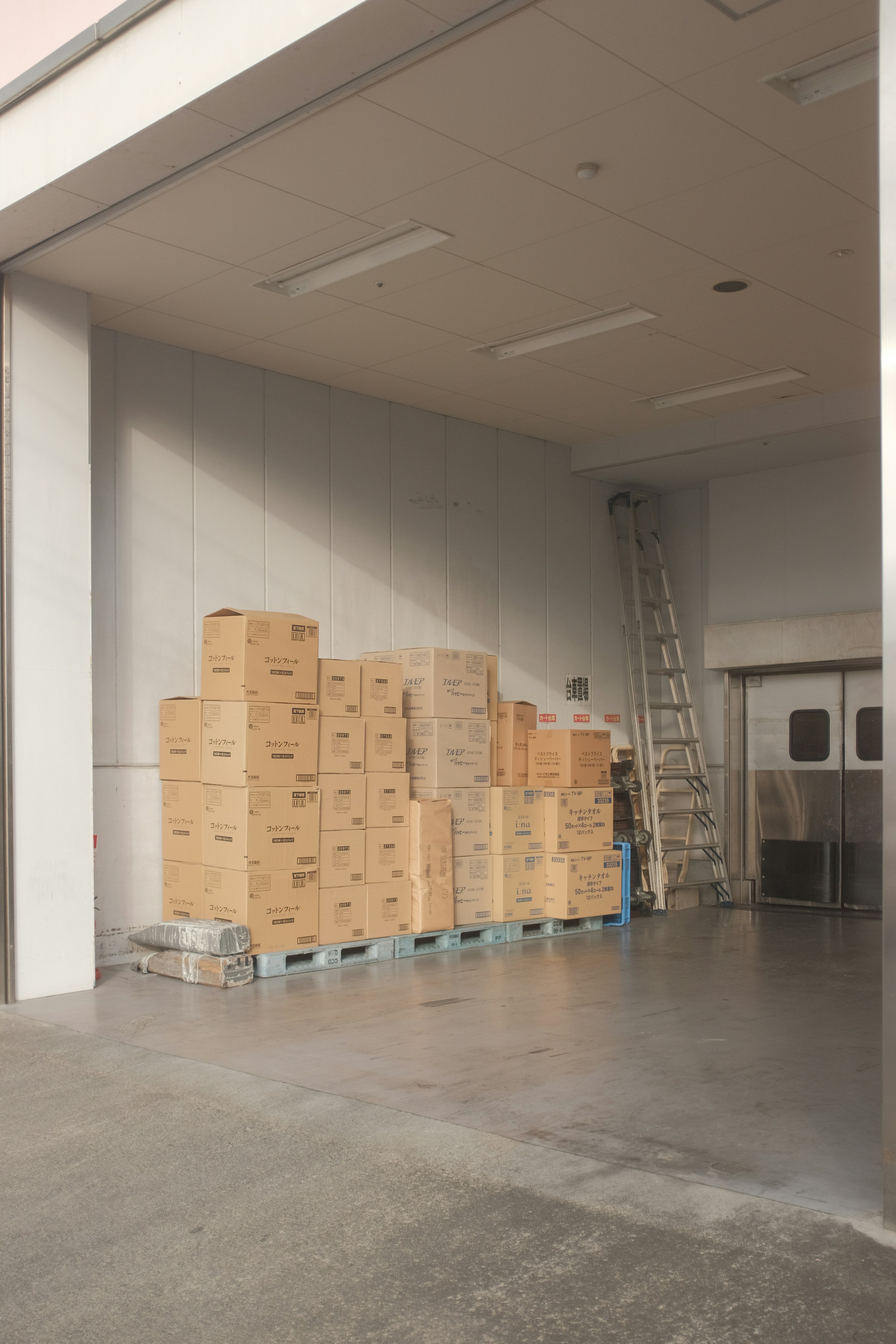Why Self Storage Is Becoming a Tech-Driven Goldmine

Once viewed as a low-maintenance side asset, self storage has rapidly evolved into one of the most profitable and tech-forward sectors in commercial real estate. From digital leasing platforms to smart access systems, operators are harnessing technology to optimize operations, elevate customer experiences, and maximize returns. The result: self storage has become a tech-driven goldmine that continues to attract institutional investors, private equity, and proptech innovators alike.
In an era defined by automation, remote management, and data analytics, the self storage industry is no longer just about square footage. It’s about scalability, digital transformation, and customer-centric innovation.
The Self Storage Boom
The growth of the self storage industry is nothing short of remarkable. According to data from the Self Storage Association, more than 10% of American households now rent storage units. This surge is driven by shifting consumer behaviors, population mobility, and urban density. But what truly sets the current wave apart is how technology has redefined the business model.
In the past, self storage success relied heavily on location, pricing, and physical maintenance. Today, the differentiator is digital infrastructure. Operators that adopt cloud-based management systems, automated leasing, and data-driven marketing strategies are outperforming traditional competitors.
Rising Demand Across Demographics
Self storage appeals to more than just people in transition. Millennials are using it to manage smaller living spaces. Businesses are renting units for inventory overflow. Retirees are downsizing but keeping prized possessions. Meanwhile, Gen Z consumers expect the same convenience and immediacy from storage as they do from streaming services.
The industry’s adaptability to these diverse needs has made it both resilient and recession-resistant.
Technology Is the New Competitive Edge
Self storage operators are no longer just landlords. They are now tech adopters, data analysts, and digital marketers. The integration of technology across every stage of the customer journey has created a new blueprint for operational success.
Cloud-Based Management Platforms
Modern self storage businesses run on cloud software that connects leasing, billing, and customer communication. Platforms like Storable, SiteLink, and Tenant Inc. allow operators to automate rent collection, track occupancy, and manage multiple facilities remotely.
This digital connectivity not only improves operational efficiency but also unlocks real-time insights into tenant behavior and property performance. Managers can analyze which units rent fastest, identify peak demand seasons, and adjust pricing dynamically—all through data-backed decisions.
Contactless Rentals and Digital Leasing
The pandemic accelerated the shift toward contactless rentals, and the trend has since become a standard expectation. Online leasing portals now enable tenants to rent, sign agreements, and make payments without ever visiting a facility in person.
For operators, digital leasing reduces overhead, eliminates paper-based workflows, and attracts tech-savvy renters who prioritize convenience. The ability to move from inquiry to occupancy in minutes has become a critical differentiator in a competitive market.
Smart Access and IoT Integration
Internet of Things (IoT) technology has redefined physical security and customer control. Smart locks, access codes, and app-controlled gates are replacing traditional padlocks and keypads.
These systems allow tenants to access their units via mobile apps, while operators monitor activity remotely. The result is a safer, more flexible environment that reduces staffing needs and enhances user experience.
Additionally, smart cameras and motion sensors offer real-time alerts, improving site security while lowering insurance risks.
Data Analytics: The New Profit Engine
In self storage, the ability to interpret data is now as valuable as the property itself. Operators are leveraging analytics to make smarter investment decisions and refine revenue strategies.
Dynamic Pricing Strategies
Just as airlines and hotels use dynamic pricing, self storage companies are adopting algorithms that adjust rental rates based on occupancy trends, demand levels, and market data.
This revenue management approach ensures units are priced optimally at all times. When demand surges, prices increase automatically. When occupancy dips, promotions or discounts are triggered to fill space quickly.
The outcome is maximized yield without sacrificing tenant satisfaction.
Predictive Analytics for Demand Forecasting
Predictive analytics tools are enabling investors and operators to identify emerging demand patterns. For example, by analyzing regional migration trends or new housing developments, operators can forecast where to build new facilities or expand existing ones.
These data-driven insights minimize guesswork and improve capital allocation, turning intuition into informed strategy.
Enhancing Customer Experience Through Technology
Technology is not just optimizing operations; it’s also reshaping the customer journey from discovery to retention.
Digital Marketing and SEO
Today’s storage renter begins their search online. Operators who invest in SEO, paid ads, and local listings dominate the digital marketplace.
High-ranking websites that offer virtual tours, instant quotes, and online booking convert prospects at a significantly higher rate. Effective SEO strategies help facilities appear at the top of “storage near me” searches—arguably the most valuable real estate on Google.
CRM and Retention Automation
Customer Relationship Management (CRM) tools are enabling storage businesses to nurture tenants throughout their lifecycle. Automated reminders for renewals, payment confirmations, and move-out feedback help maintain engagement without manual effort.
Personalized communication, loyalty offers, and proactive service updates enhance the tenant experience while increasing retention rates.
Virtual Tours and AI Chatbots
AI-powered chatbots are now handling inquiries 24/7, guiding potential renters through pricing, availability, and promotions. Combined with virtual tours, these tools allow customers to explore facilities digitally before making decisions.
This level of accessibility appeals to younger, digital-first consumers and reduces dependency on on-site staff.
Investment Appeal: A Stable, Scalable Asset Class
Technology is not only improving operations—it’s amplifying investor confidence. Self storage has proven to be a consistent performer even in volatile markets, offering steady cash flow and attractive yields.
Low Overhead, High Scalability
Compared to multifamily or retail properties, self storage facilities require minimal maintenance and staffing. With tech-driven automation, one manager can oversee multiple locations remotely.
This scalability makes self storage an appealing option for portfolio diversification. Investors can replicate successful models across markets without exponentially increasing costs.
Data-Driven Due Diligence
Investors are leveraging data analytics platforms to evaluate acquisition opportunities with greater precision. By examining local search volume, population growth, and competitor occupancy, buyers can project revenue potential more accurately.
This tech-enhanced due diligence process mitigates risk and improves investment outcomes, turning traditional property evaluation into a science rather than an art.
Sustainability and the Next Frontier
As ESG (Environmental, Social, and Governance) priorities gain traction, technology is helping the self storage sector become more sustainable and community-oriented.
Energy Efficiency Through Automation
Smart lighting systems and temperature controls are reducing energy consumption while maintaining optimal conditions for stored goods. Solar panels, automated timers, and energy monitoring dashboards are becoming standard in new developments.
These features not only lower operational costs but also appeal to environmentally conscious investors and tenants.
Remote Work and Urban Migration Trends
The rise of remote work has reshaped space utilization patterns. As people relocate and businesses downsize, demand for flexible storage continues to grow. Technology allows operators to adapt quickly—launching marketing campaigns, adjusting pricing, or managing new locations entirely online.
The sector’s agility has made it one of the most future-ready corners of commercial real estate.
The Role of Proptech in Shaping the Future
Proptech companies are now central to the evolution of self storage. They are building tools that unify access control, facility management, customer communication, and analytics into cohesive ecosystems.
Integrations That Drive Efficiency
By connecting CRMs, accounting software, marketing platforms, and security systems, proptech solutions eliminate data silos. Operators gain a unified dashboard that tracks everything from leads to locks.
This holistic visibility empowers smarter decisions and faster growth.
AI and Machine Learning
Artificial intelligence is the next major disruptor. Machine learning algorithms can predict tenant churn, identify pricing anomalies, and recommend marketing strategies based on real-time behavior.
These technologies enable operators to move from reactive management to proactive optimization—a leap that transforms good businesses into great ones.
The Customer of the Future
Tomorrow’s self storage tenant expects a fully digital experience. They want instant quotes, seamless payments, mobile access, and personalized communication. Meeting these expectations is no longer optional; it’s the new baseline for competitiveness.
Operators that continue investing in digital transformation will win not only market share but also long-term customer loyalty.
Meanwhile, those who resist change may find themselves in a race to the bottom on price and convenience.
Challenges and Considerations
The technology revolution is not without its hurdles. Implementation costs, system integrations, and data security remain key concerns.
Cybersecurity Risks
As storage businesses move online, protecting customer data becomes paramount. Facilities that handle online payments and personal information must adhere to robust cybersecurity practices, including encryption and multi-factor authentication.
Failure to secure digital systems can undermine consumer trust and lead to regulatory penalties.
Balancing Automation with Human Touch
While automation drives efficiency, human connection still matters. Personalized service, responsive customer support, and community involvement remain crucial for building brand loyalty.
Operators must find the balance between digital convenience and authentic engagement.
Conclusion
Self storage has officially entered its tech-driven era. What began as a simple solution for extra space has become a sophisticated, data-rich, and investor-attractive asset class.
Technology is fueling every facet of growth: streamlining operations, enriching customer experiences, and enhancing profitability. From smart locks to predictive analytics, digital transformation is redefining what success looks like in self storage.
As innovation continues to accelerate, the sector’s trajectory points upward. Those who embrace technology today are not just improving efficiency—they’re securing their place in one of real estate’s most promising, resilient, and forward-thinking markets.


